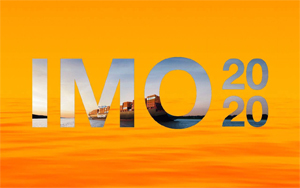As the coronavirus disrupted global trade in the first few months of 2020, the International Maritime Organization (IMO) reported a “relatively smooth” transition to its 0.5 percent sulfur cap for fuel. At major bunker ports, supplies of very-low-sulfur fuel were sufficient, and large operators had contracts with trusted suppliers.
As of Jan. 1, vessels are required to burn fuel with 0.5 percent sulfur content under MARPOL Annex VI, or they can continue to use 3.5 percent fuel if an exhaust gas cleaning system (scrubber) has been installed. Operators in Emission Control Areas (ECAs), including most of the United States, have been required to use 0.1 percent fuel since Jan. 1, 2015.
Prices for low-sulfur fuel ramped up sharply in the first week of the new IMO 2020 regime, but they fell during the next several weeks as shipping demand declined amid efforts to contain the coronavirus outbreak. Consequently, there were few reports of fuel shortages or enforcement actions. The most common complaint was poor quality from organic contamination that left sediment in the fuel, making it difficult to burn.
“In the first month or so, it was pretty quiet on the enforcement front,” said Beth Bradley, a London-based partner at maritime law specialist Hill Dickinson. “However, it’s difficult to tell whether that’s because there’s been a very high incidence of compliance, or whether some port state controls have not yet got fully up to speed to start investigating and enforcement. I suspect there’s an element of both.”
Since March 1, vessels also can no longer carry high-sulfur fuel on board if they are not outfitted with scrubbers. Ships without scrubbers carrying noncompliant fuel are considered to be in violation of MARPOL Annex VI.
Bradley said there have been some compliance issues due to the margin of error in testing the sulfur content of fuel. Under the specifications of ISO 8217, any fuel tested after purchase with up to 0.53 percent sulfur should still be commercially acceptable, but MARPOL Annex VI stipulates 0.5 percent as the limit. Because of this, some operators have had to unload fuel if it tested close to 0.53 percent due to the risk of enforcement action against the vessel, she said.
Problems with sediment in low-sulfur fuel were noted in Singapore, in Amsterdam and Rotterdam in the Netherlands, and in Antwerp, Belgium. The sediment can clog filters, cause engine damage and even lead to blackouts.
The coronavirus that has spread around the world from China cut shipping demand in late January and February as factories and other businesses closed. Demand for low-sulfur fuel also dropped, offsetting any potential shortages. When the virus passes and commerce returns to normal, supply problems could surface.
Operators in U.S. waters may be aware of the Coast Guard’s reputation for enforcing MARPOL fuel regulations, particularly in the Gulf of Mexico, which could cut down on the number of enforcement actions there.
“(The operators) may be a little more honest in terms of compliance, because they will go the extra mile to make sure they are not hammered with sometimes eye-watering fines like in the past,” Bradley said.
Globally, enforcement varies by port state policy. Some countries have publicized how aggressive they will be in enforcing the 0.5 percent cap, but some countries have made it clear they don’t support the rule and they don’t want to enforce it, Bradley said. The IMO will monitor enforcement actions to ensure no countries ignore the regulations.
Because the effects of the coronavirus may be influencing bunker volumes, it is likely too early to call the transition an unqualified success.
“I wouldn’t rush too quickly to the conclusion that there’s been high compliance and high enforcement everywhere,” Bradley said. “It’s likely to be more of a developing story over the next six to 12 months.”

